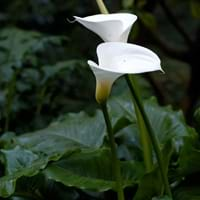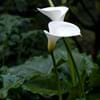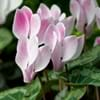Life Span
Perennial
Biennial
Type
Bulb, Flowering Plants
Tree
Origin
South Africa, Swaziland
Mid-Atlantic United States, Southeastern United States, Central United States, South-Central United States
Types
Passionfruit, Fire glow, Gem rose, Blaze, Crystal blush
Yellow Birch, Paper Birch, River Birch
Habitat
Swamps
Hills, Moist Soils
USDA Hardiness Zone
8-10
4-9
Sunset Zone
2a, 2b, 5, 6, 8, 9, 12, 13, 14, 15, 16, 17, 18, 19, 20, 21, 22, 23, 24
1a, 1b, 2a, 2b, 3a, 3b, 4, 5, 6, 7, 8, 9, 10, 11, 12, 13, 14, 15, 16, 17, 18, 19, 20, 21, 22, 23, 24
Habit
Clump-Forming
Oval or Rounded
Flower Color
Blue, Dark Purple, Light Purple, Red, White
Yellow, Brown
Flower Color Modifier
Bicolor
Bicolor
Fruit Color
Not Available
Black
Leaf Color in Spring
Dark Green
Green, Light Green
Leaf Color in Summer
Green, Dark Green
Green, Light Green
Leaf Color in Fall
Green, Dark Green
Yellow, Light Yellow, Tan
Leaf Color in Winter
Green, Dark Green
Not Available
Leaf Shape
Arrowhead
Pinnate
Plant Season
Autumn, Spring, Summer
Spring, Summer, Fall, Winter
Sunlight
Full Sun, Part sun, Partial shade
Full Sun, Partial Sun
Type of Soil
Clay, Loamy
Clay, Loam
The pH of Soil
Neutral, Slightly Acidic
Acidic, Neutral
Soil Drainage
Average
Average
Bloom Time
Spring, Summer
Spring
Tolerances
Wet Site
Wet Site, Pollution, Soil Compaction
Where to Plant?
Container, Pot
Ground
How to Plant?
From bulbs, From Rhizomes, Seedlings, Transplanting
Seedlings
Plant Maintenance
Medium
Medium
Watering Requirements
Over-watering can cause leaf problems or root diseases, Requires a lot of watering
Requires watering in the growing season, Water daily during growing season, Water Deeply, Water more frequently during periods of extreme drought
In Summer
Lots of watering
Lots of watering
In Spring
Moderate
Moderate
In Winter
Average Water
Average Water
Soil pH
Neutral, Slightly Acidic
Acidic, Neutral
Soil Type
Clay, Loamy
Clay, Loam
Soil Drainage Capacity
Average
Average
Sun Exposure
Full Sun, Part sun, Partial shade
Full Sun, Partial Sun
Pruning
Prune to stimulate growth, Remove dead or diseased plant parts, Remove deadheads
Remove branches, Remove damaged leaves, Remove dead branches, Remove dead leaves, Remove dead or diseased plant parts, Remove hanging branches
Fertilizers
All-Purpose Liquid Fertilizer
All-Purpose Liquid Fertilizer, fertilize twice a year, Nitrogen
Pests and Diseases
Armillaria mellea, Gray mold, Leaf spot, Powdery mildew, Pythium rot, Rhizoctonia crown rot, Root rot, Thripes
Red blotch
Plant Tolerance
Drought
Pollution, Soil Compaction, Wet Site
Flower Petal Number
Single
Not Available
Foliage Texture
Coarse
Medium
Foliage Sheen
Glossy
Matte
Attracts
Not Available
Ants, Aphids, Birds, Not Available
Allergy
Diarrhea, Intestinal gas, Vomiting
Not Available
Aesthetic Uses
Beautification, Bouquets
Not Used For Aesthetic Purpose
Beauty Benefits
Not Available
Good for skin
Environmental Uses
Air purification
Air purification, Nesting sites for birds, Shadow Tree, Shelter for wildlife, Wildlife
Medicinal Uses
Not Available
Antibacterial, anti-inflammatory, Arthritis, Boils, bowel syndrome, Combats Stress, Diarrhea, Dysentry, Heart problems, Kidney Stones, Osteoarthritis, Skin Disorders, Urinary tract problems
Part of Plant Used
Flowers
Bark, Leaves, Sap
Other Uses
Showy Purposes
Medicinal oil, Used as essential oil
Used As Indoor Plant
No
No
Used As Outdoor Plant
Yes
Yes
Garden Design
Not Available
Feature Plant, Shade Trees
Botanical Name
Zantedeschia Aethiopica
BETULA nigra 'Studetec'
Common Name
Calla Lily
Black Birch, River Birch, Tecumseh Compact River Birch
In Hindi
Calla Lily
काले बर्च वृक्ष
In German
Calla-Lilien-
Schwarze Birke
In French
Lys calla
Noir Bouleau
In Spanish
Cala
Negro del árbol de abedul
In Greek
Calla κρίνος
Μαύρο Birch Tree
In Portuguese
Calla
Bétula Preto
In Polish
Calla Lily
Czarny Brzoza
In Latin
Calla Lilium
Niger Caerulus
Phylum
Magnoliophyta
Magnoliophyta
Class
Liliopsida
Magnoliopsida
Order
Alismatales
Fagales
Family
Araceae
Betulaceae
Genus
Zantedeschia
Betula
Clade
Angiosperms, Monocots
Angiosperms, Eudicots, Rosids
Tribe
Zantedeschieae
Not Available
Subfamily
Aroideae
Not Available
Importance of Calla Lily and Black Birch
Want to have the most appropriate plant for your garden? You might want to know the importance of Calla Lily and Black Birch. Basically, these two plants vary in many aspects. Compare Calla Lily and Black Birch as they differ in many characteristics such as their life, care, benefits, facts, etc. Every gardener must at least have the slightest clue about the plants he wants to plant in his garden. Compare their benefits, which differ in many ways like facts and uses. The medicinal use of Calla Lily is Not Available whereas of Black Birch is Antibacterial, anti-inflammatory, Arthritis, Boils, bowel syndrome, Combats Stress, Diarrhea, Dysentry, Heart problems, Kidney Stones, Osteoarthritis, Skin Disorders and Urinary tract problems. Calla Lily has beauty benefits as follows: Not Available while Black Birch has beauty benefits as follows: Not Available.
Compare Facts of Calla Lily vs Black Birch
How to choose the best garden plant for your garden depending upon its facts? Here garden plant comparison will help you to solve this query. Compare the facts of Calla Lily vs Black Birch and know which one to choose. As garden plants have benefits and other uses, allergy is also a major drawback of plants for some people. Allergic reactions of Calla Lily are Diarrhea, Intestinal gas and Vomiting whereas of Black Birch have Not Available respectively. Having a fruit bearing plant in your garden can be a plus point of your garden. Calla Lily has no showy fruits and Black Birch has no showy fruits. Also Calla Lily is flowering and Black Birch is not flowering . You can compare Calla Lily and Black Birch facts and facts of other plants too.





